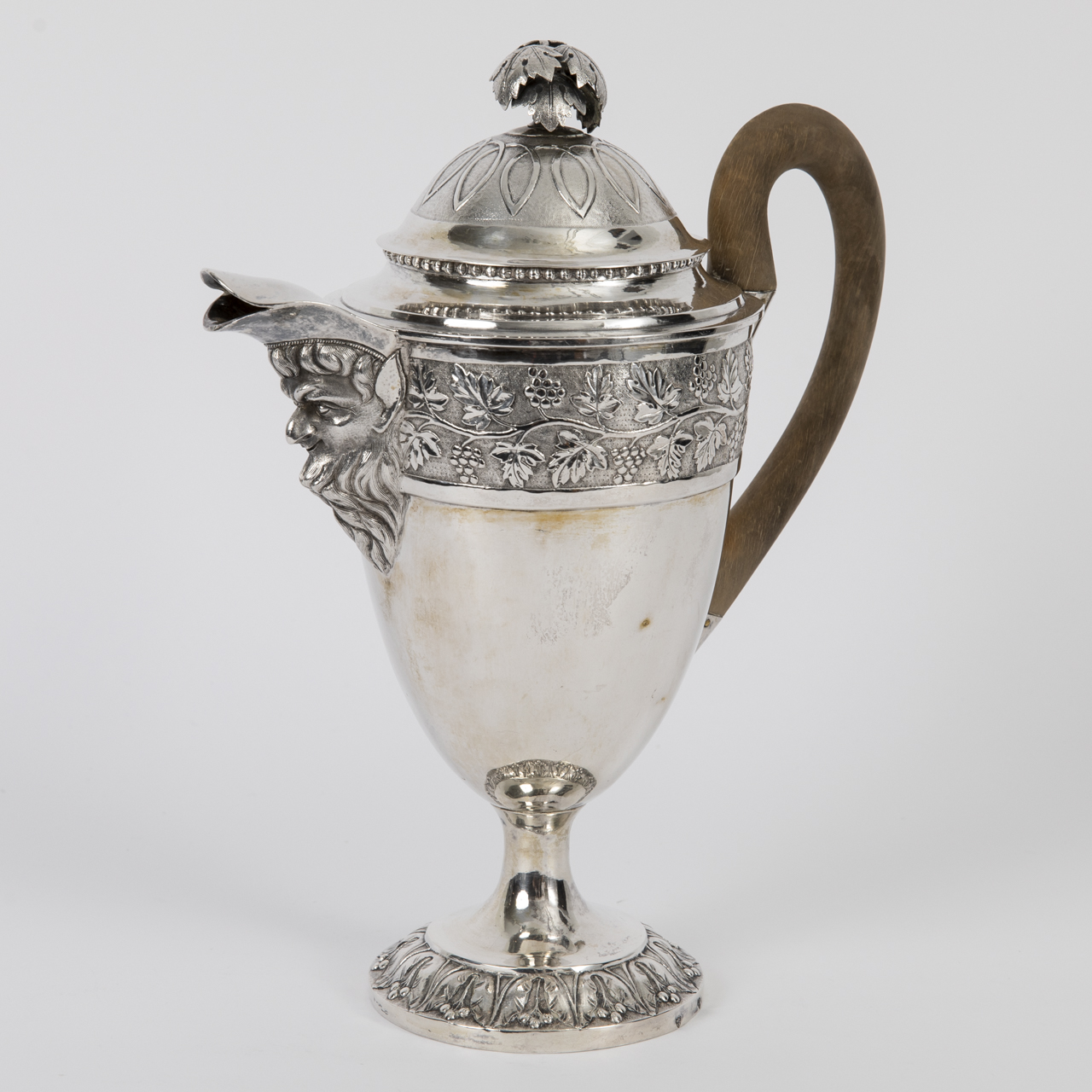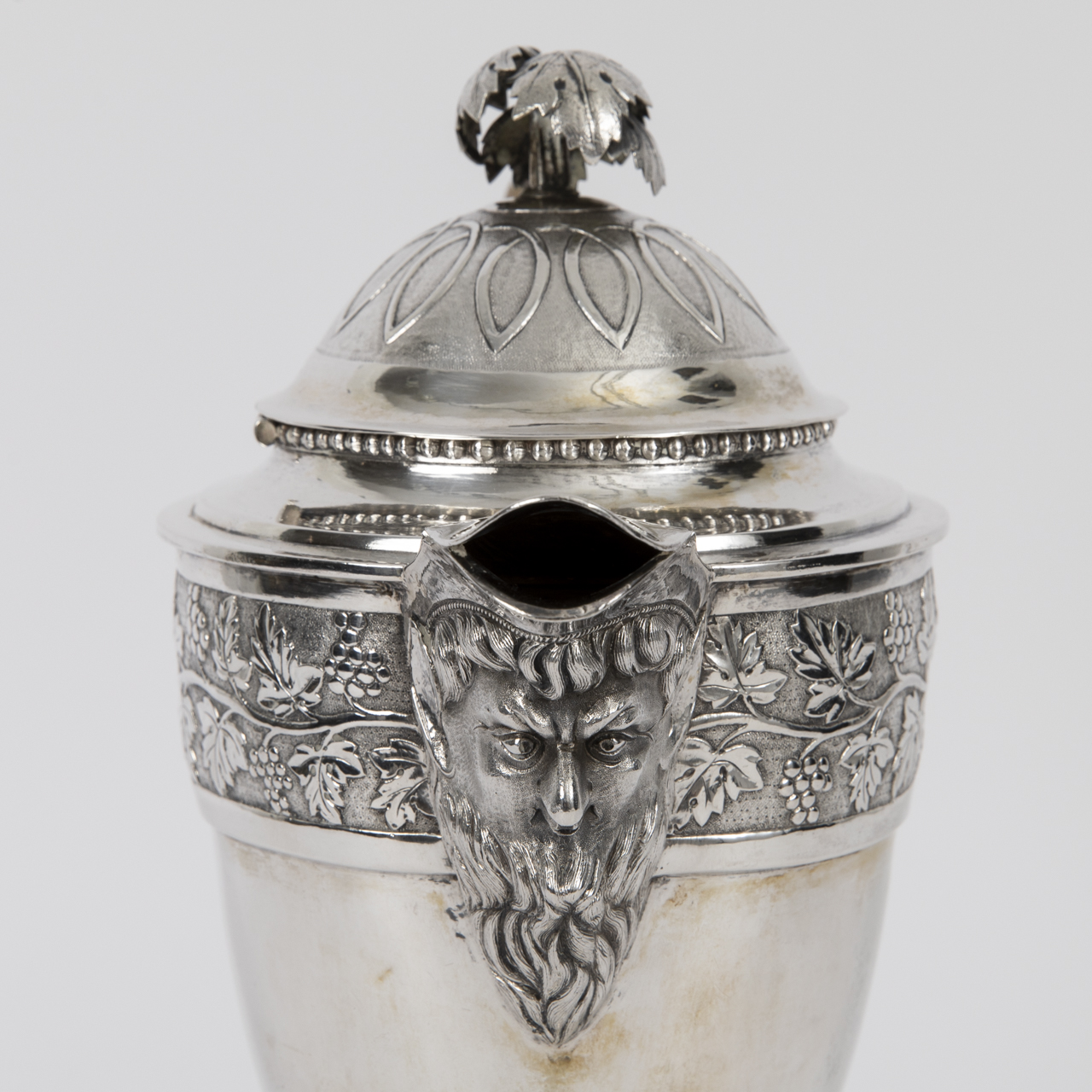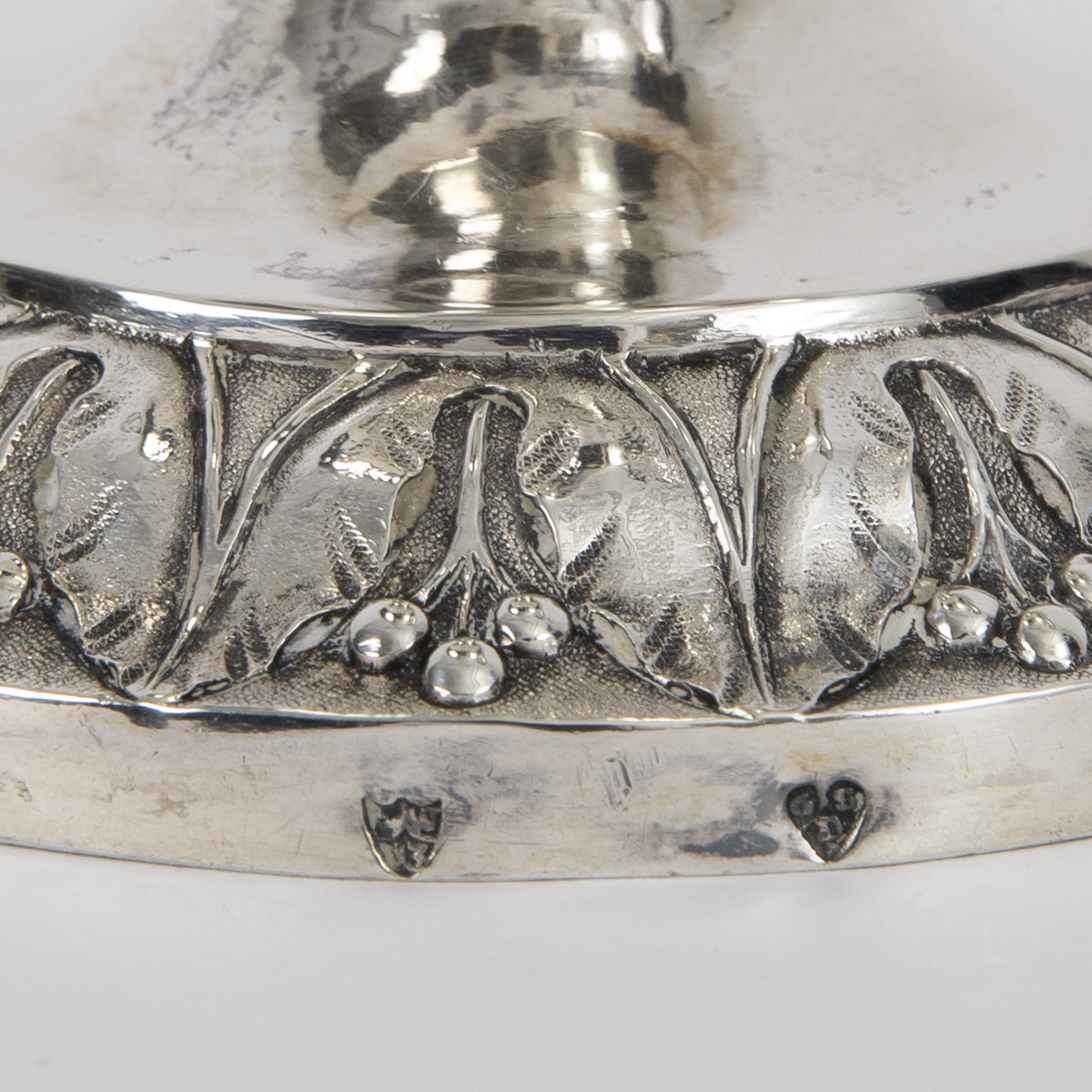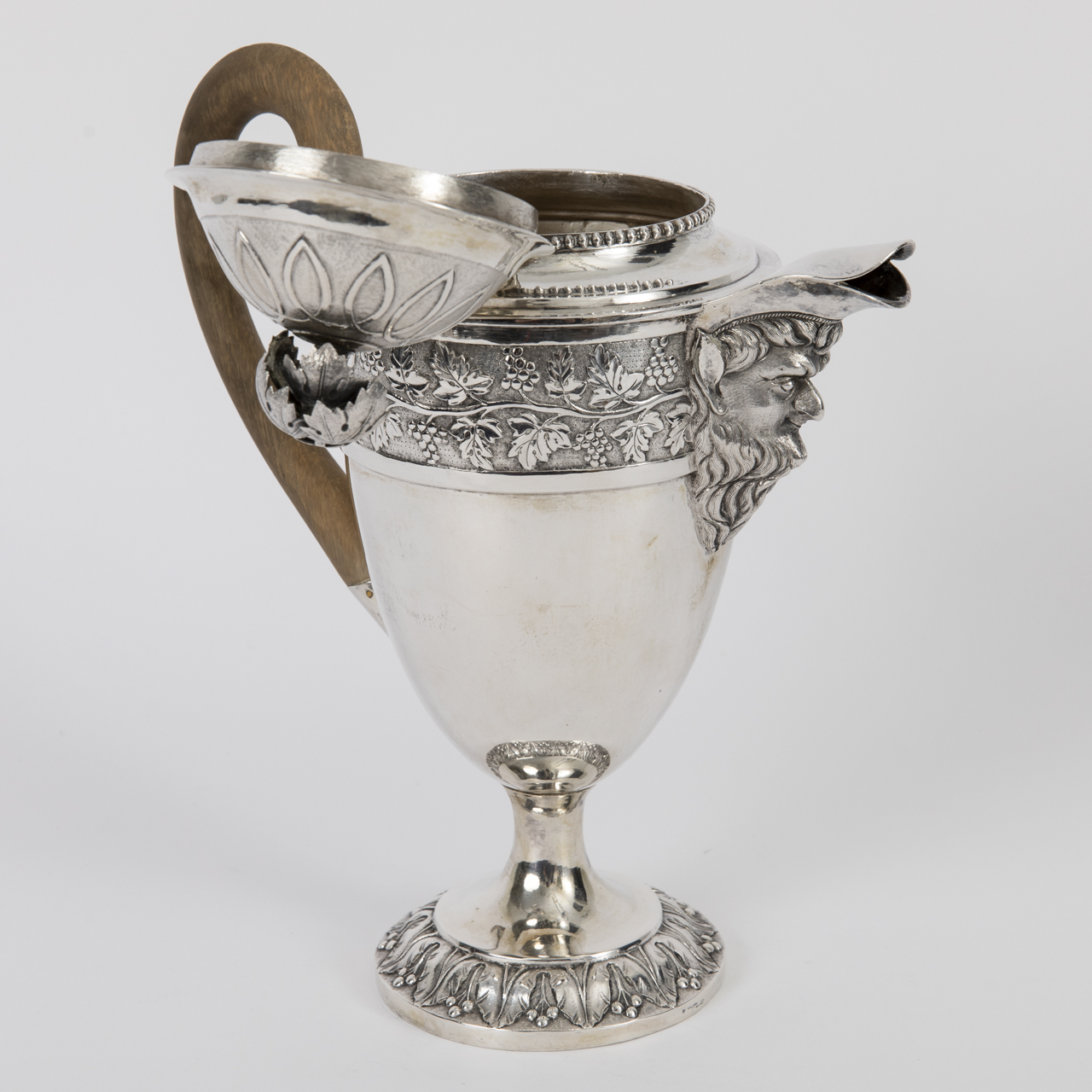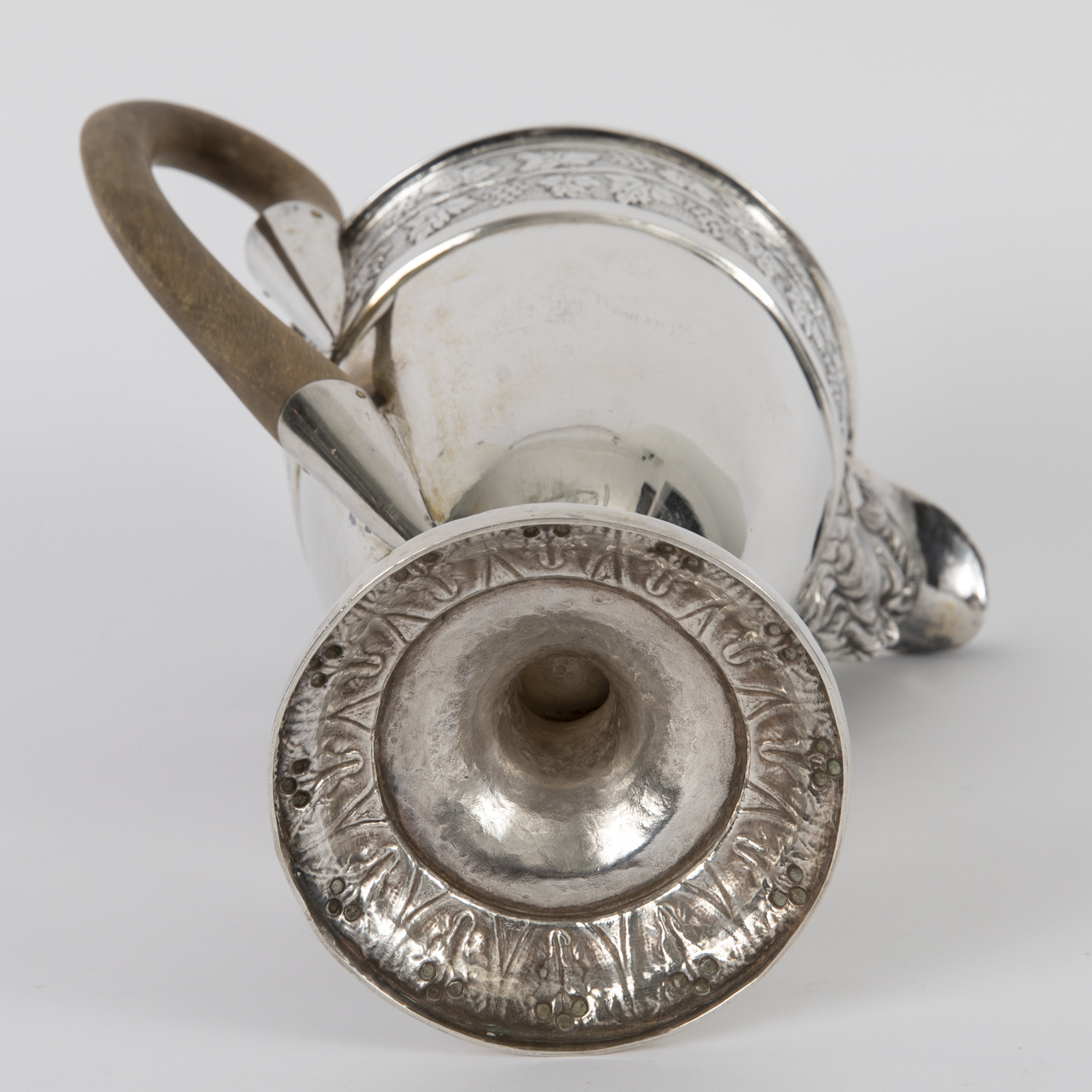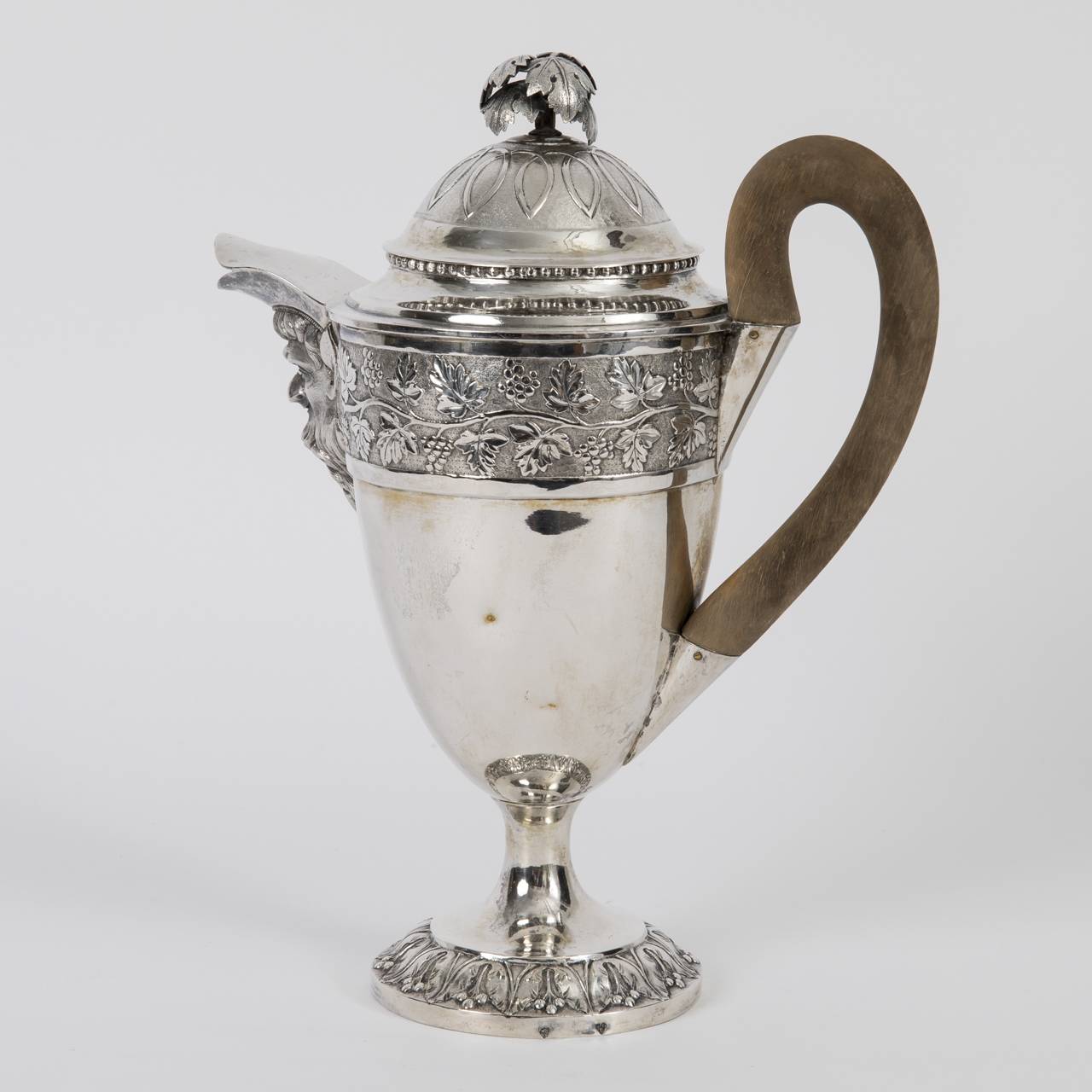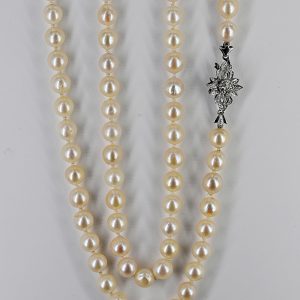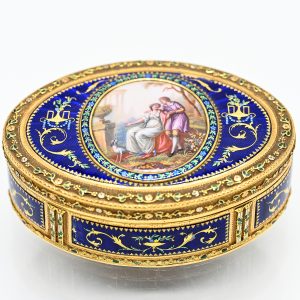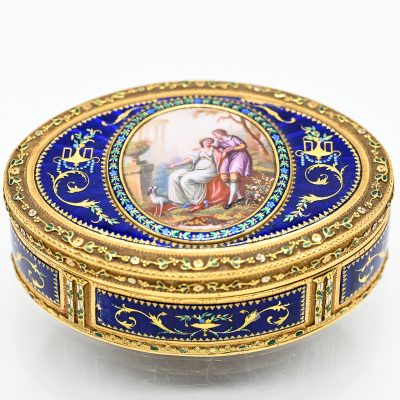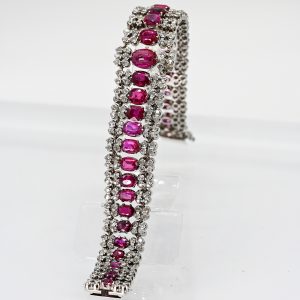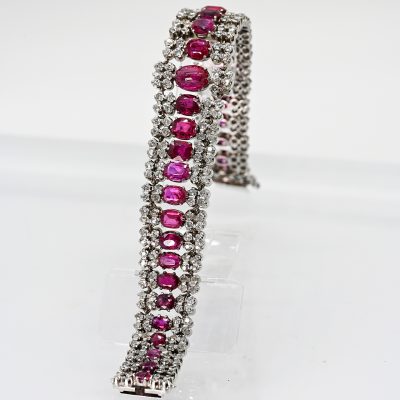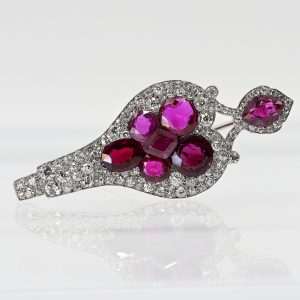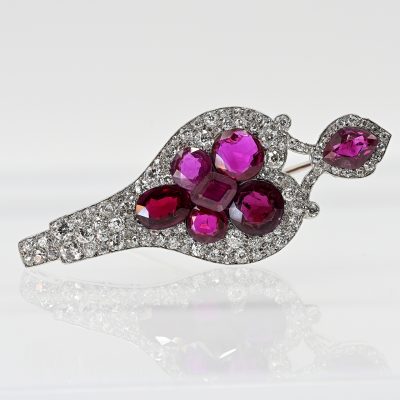Los Nr. 331
Silberne Kanne im Biedermeier-Stil, Georg Stephan Dörffer (tätig um 1793–1824), Würzburg, Anfang 19. Jahrhundert
Silver pot in Biedermeier style, Georg Stephan Dörffer (active c. 1793-1824), Würzburg, early 19th century
13-lötig; Gewicht: ca. 683 g; aufwendig gestaltete Silberkanne mit birnenförmigem Korpus, umlaufendem Weinrankendekor und eingezogenem Schaft auf rundem Standfuß, umlaufend reliefiert mit Weinblattdekor; hoch angesetzter Ohrenhenkel aus hellem Holz; seitlich abklappbarer Deckel mit Perlrand- und Ornamentaldekor, bekrönt von einer Handhabe in Form stilisierter Weinblätter; breiter Schnabelausguss mit reliefiertem Bacchusporträt; altersbedingte Gebrauchsspuren; seitlich am Standfuß gestempelt mit Meistermarke („GSD“ im Herzschild - vgl. Rosenberg, Bd. III, Nr. 4954) und Würzburger Stadtmarke, Beschauzeichen; Höhe: ca. 26,8 cm.
13-lot silver; weight: approx. 683 g; elaborately designed silver pot with pear-shaped body, continuous vine decoration and indented shaft on a circular foot, encircled with relief vine leaf ornamentation; high-set ear-shaped handle made of light wood; hinged lid on the side with beaded and ornamental decoration, surmounted by a handle in the form of stylised vine leaves; wide spout adorned with a relief of Bacchus; age-related signs of wear; hallmarked on the side of the base with master’s mark (“GSD” in a heart-shaped shield - cf. Rosenberg, Vol. III, No. 4954) and Würzburg city mark, assay mark; height: approx. 26.8 cm.
Limit: 1.300,00 €
Eine Auswahl unserer aktuellen Lose:
-
Los Nr. 226
Lange Akoya-Perlenkette mit weißgoldener, diamantbesetzter Schließe, 80er Jahre380,00 €Clasp in 750/- white gold; stylised flower set with 7 small diamonds, total approx. 0.05 ct; colour and clarity: in the medium range; dimensions: approx. 20.2 x 14.9 mm; cream-coloured Akoya pearls with silvery lustre; natural surface characteristics and slightly irregular shape; diameter: approx. 7.5-8.3 mm; total length: approx. 100 cm.
-
Los Nr. 227
Museale Emaille-Dose aus Gold, 18. Jahrhundert5.800,00 €20-carat yellow gold; total weight: approx. 89 g; oval lidded box in yellow gold with framed enamel miniature depicting a Watteau-style scene with an antique-inspired portrayal of a couple leaning toward each other with a dog in an idealised landscape at the centre of the lid, framed by dark blue enamel with guilloché paillon and pellet décor within chased borders featuring green enamel floral scrollwork; rim divided into four square cartouches with ornamental décor and underside with corresponding oval cartouche showing fine floral and ornamental decoration; age-related dents, surface rubbing, and enamel damages of 5 to 10 mm; interior on both sides stamped with fineness mark “20 K” and six-pointed crown with monogram “AI”; dimensions: approx. 2.5 x 6.9 x 4.9 cm.
-
Los Nr. 222
Prunkvolles Armband mit 31 Rubinen und 252 Diamanten, zus. ca. 10 ct, aus verschiedenen Epochen11.000,00 €Platinum; total weight: approx. 80 g; composed of multiple articulated segments with lateral flow; centrally set with 31 rubies in various colour varieties, carat, inclusion characteristics and cut types: 1 cabochon and 30 faceted; dimensions of the stones from 4.6 x 3.7 mm to 10 x 7 mm; laterally framed by a total of 252 diamonds cut in various old cuts; colour: H-L (mid to lower range); clarity: SI-Piqué 2 (in the mid to lower range); concealed box clasp with side safety eights; dimensions of the bracelet: centre approx. 23.6 mm, sides approx. 16.6 mm; total length: approx. 20 cm; stamped on the reverse: Carl Ernst; minor signs of wear to the facet edges; various tin restorations on individual prongs; presumably a marriage assembled from several pieces of jewellery.
-
Los Nr. 223
Prunkvolle Nadel mit 7 Rubinen und ca. 111 Altschliff-Diamanten, zus. ca. 5,38 ct (lt. Gravur), gestempelt Carl Ernst, aus verschiedenen Epochen3.300,00 €Platinum; total weight: approx. 13.5 g; stylised lyre form; set with 7 rubies in various colour varieties, carat, inclusion characteristics and cut types: 2 in lozenge shape 9.3 x 7 mm and 7.7 x 6.6 mm; 4 round shapes with diameters of approx. 9.2 mm, 8.7 mm, 6.7 mm and 6.5 mm; oval 1 x 9.2 x 7.3 mm; framed by 111 diamonds pavé-set in various old cuts, total approx. 5.38 ct (according to engraving); colour: H-K; clarity: VS-Piqué 2; dimensions of the pin: 64 x 25.8 mm; stamped on the reverse: Carl Ernst; 2 rubies with punctual bruising, minimal facet wear; pin stem and at the Garder two small tin restorations; rubies likely added later; presumably a marriage.
